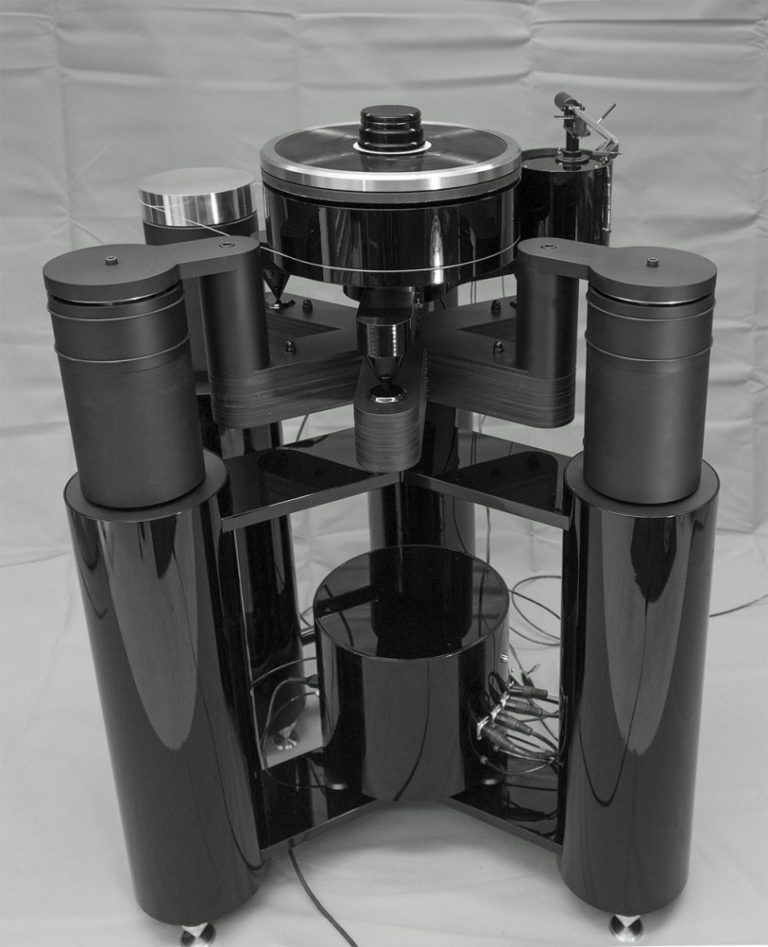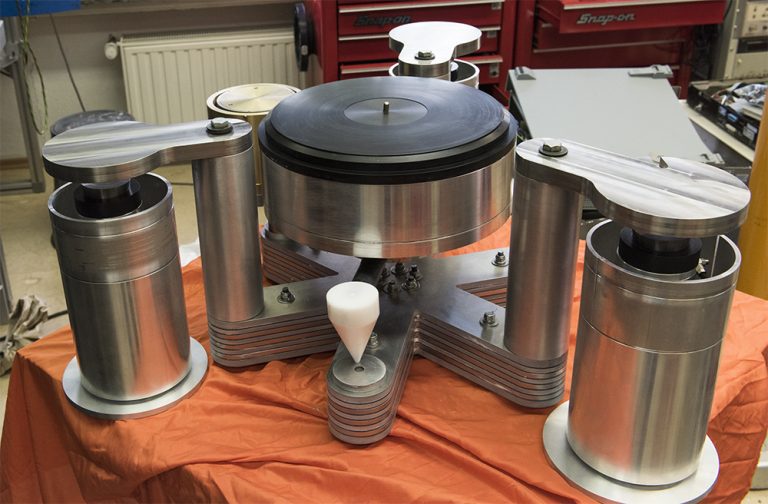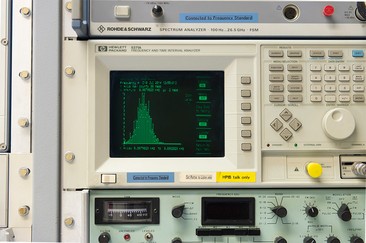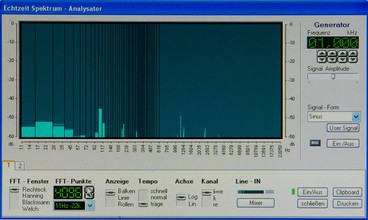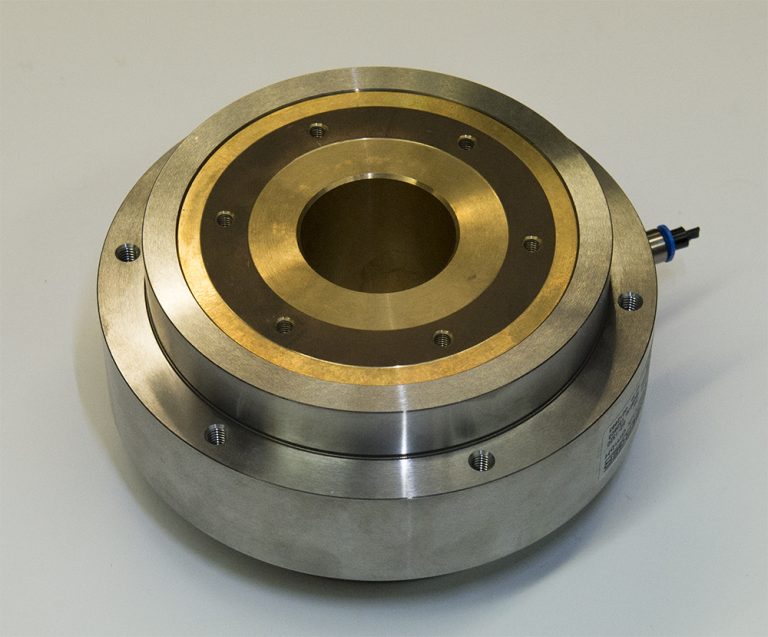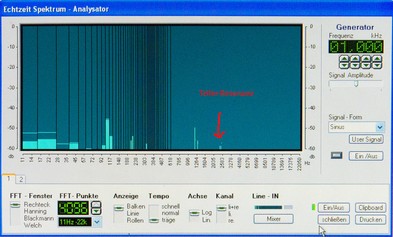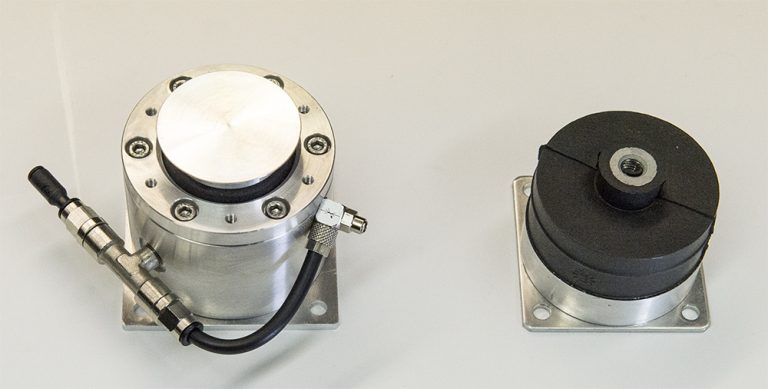
Laufwerk Caeles
Was mich persönlich im ganzen High End Bereich zunehmend stört ist die gesamte Preisentwicklung.
Produkte die von der Wiedergabequalität durchaus gut oder sehr gut sind, sind für Normalverdiener immer häufiger völlig unerschwinglich.
Das liegt nach meiner Einschätzung an mehreren Faktoren: Es werden immer höherere Anforderungen an Optik und Oberflächen gestellt, wozu auch die Anforderungen nach optisch ausgefallenem Design zählen.
Dann die gleichfalls gestiegenen Anforderungen an das ganze „Umfeld“ also Verpackung, Bedienungsanleitung , Zubehör und Internetauftritt. Aber gleichzeitig werden nur sehr kleine Stückzahlen verkauft.
Hier möchte ich ein wenig gegensteuern:
In Zukunft bieten wir das Caeles-Laufwerk zu einem attraktiven Preis im Direktvertrieb an. Alle für die Wiedergabe wichtigen technischen Komponenten sind wie schon beim ursprünglichen Caeles Laufwerk vorhanden. Wo ich inzwischen Verbesserungsmöglichkeiten herausgefunden habe, werden diese auch umgesetzt. So kommen sehr gute aperiodisch bedämpfte 2-Kammer Pneumatikdämpfer für das Subchassis zum Einsatz. Der Plattenteller wurde weiter optimiert.
Wo ich Abstriche mache, ist bei der Oberflächengestaltung und nicht notwendigem Bedienungskomfort.
Das Laufwerk wird individuell für den jeweiligen Kunden gefertigt. Sonderwünsche können so berücksichtigt werden.
Oben der Probeaufbau eines Laufwerkes bei uns in der Fertigung. Dieses Laufwerk ist nur für die Verwendung mit dem zugehörigen Rack ausgelegt. Dadurch konnte der Schwerpunkt des Subchassis tiefer gelegt werden. Alle relevanten Verbesserungen für die klangliche Performance wurden bereits umgesetzt.
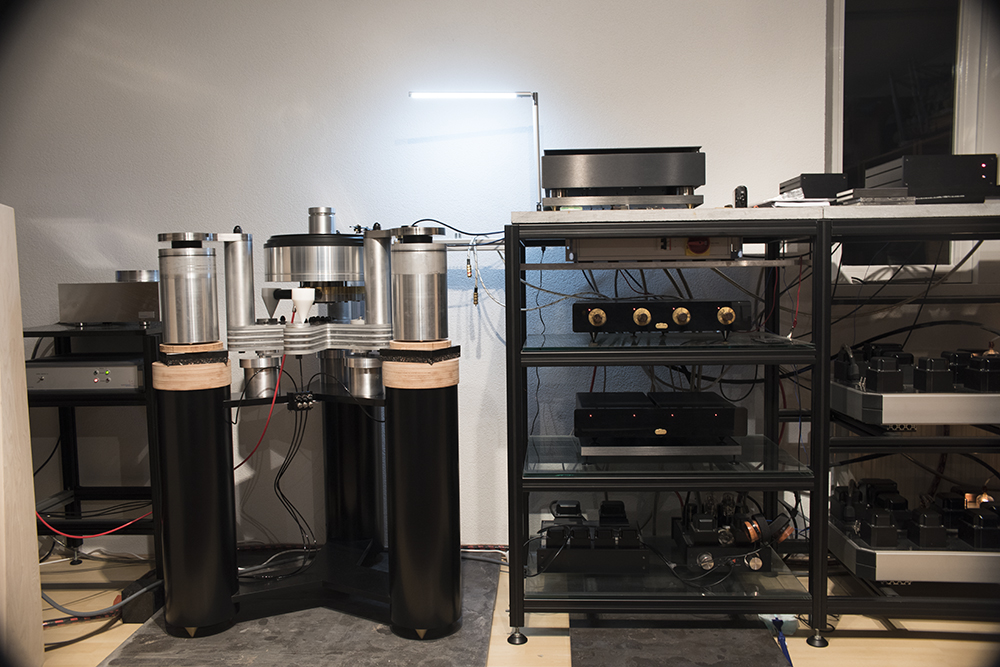
Hier der oben abgebildete Prototyp nach Fertigstellung.
Eine weitere Beschreibung findet man hier:
https://www.gecom-technologies.com/blog/?p=943
Hier die Beschreibung des Laufwerks in deutscher Sprache:
Welche Anforderungen muss man an ein Laufwerk stellen?
Im Grunde gibt es 3 Hauptbereiche, die möglichst perfekt umgesetzt werden müssen:
- Der Teller muss sich mit der gewünschten Drehzahl konstant und lastunabhängig drehen.
- Störungen, die von außen auf das Laufwerk treffen, müssen soweit wie möglich unterdrückt werden.
Unter diesen Störungen versteht man:
A. Körperschall:
Dies sind alle Störungen die über Materialübergänge, z.B. von der Aufstellungsfläche auf den Abtastvorgang übertragen werden. Als Beispiele wären zu nennen: Die Vibrationen, die durch die Lautsprecher beim Musik hören über den Boden abgeben werden;Trittschall oder sonstige Erschütterungen.
B. Luftschall:
Dies sind alle Störungen, die über die Luft übertragen werden. Die Hauptkomponente ist hierbei die abgestrahlte Musik. Als Erklärung hierzu: Schall erzeugt Luftdruckschwankungen, die natürlich auch eine gewisse Kraft ausüben.
C. Störungen durch elektromagnetische Felder:
z.B. Transformatoren von in der Nähe aufgestellten Geräten.
3. Störungen, die durch den Abspielvorgang selbst produziert werden.
Hierzu zählen:
A. Laufgeräusche des Antriebs/Motors.
B. Laufgeräusche durch das Lager.
C. Schwingungen, die durch den Abtastvorgang selbst verursacht werden. Um dies zu verdeutlichen höre man sich nur einmal die deutlichen Geräusche an die man von einem Tonabnehmer hören kann, wenn die Lautsprecher ausgeschaltet sind. Diese Schwingungsenergie, die zuerst einmal an Tonabnehmer und Schallplatte auftritt, muss ohne Resonanzen und Reflektionen zur Aufstellungsfläche abgeleitet werden.
Motor
Die Anforderung an eine genaue konstante Drehzahl lässt sich relativ einfach mit einer Quarzgesteuerten PLL umsetzen. Erklärung: Die Nenndrehzahl des Pulleys ist hierbei vorgegeben und wird durch entsprechende Teilung mit der Frequenz eines Schwingquarzes verglichen und bei Bedarf nachgeregelt. Selbstredend muss man konstruktiv darauf achten, dass die Schaltung nicht übernervös reagiert oder ruckt.
Zur Lösung des Problems haben wir hierfür einen langsam laufenden, drehmomentstarken Motor mit gesinterten Gleitlagern ausgewählt. Als Antriebssystem selbst verwenden wir einen Rundriemen.
Im Gegensatz zu „Standardkonzepten“ haben wir mit 16cm Durchmessern ein sehr großes Pulley gewählt. Dies hat folgenden Vorteil gegenüber kleineren Pulleys: Die Drehzahl von Plattenspielern beträgt 33 1/3 U/min und 45 U/min. Dies entspricht einer Frequenz von: 0,55Hz bzw. von 0,75Hz. Hat das Pulley einen Durchmesser von ca. 1,5 cm, wie häufig verwendet, so ergibt sich aus dessen Drehzahl eine Frequenz von ca. 11,1 HZ und 15 Hz. Die unweigerlich auftretenden Harmonischen liegen dann schon im Hörbereich – also bei 33 1/3 U/min 22,2 Hz bis 111 Hz, die im Hörbereich liegen. Dies sind Störungen, die die Wiedergabe beeinträchtigen.
Bei unserem Pulley liegt die Drehfrequenz bei 1,11 Hz bzw. 1,50 Hz. Bis zur 10ten Harmonischen liegen dann alle Frequenzen unterhalb des Hörbereiches. Davon abgesehen hat ein Pulley mit 16 cm Durchmesser und 1,6 kg Gewicht einen „Flywheel-Effekt“. Nicht zu vernachlässigen ist auch die viel Größere Kontaktfläche, die hierbei der Riemen mit dem Antriebs- Pulley hat. Bei 1,5 cm sind es nur ca. 1,6 cm, während es bei unserem Pulley 16,75 cm sind. Hierdurch entsteht viel weniger Schlupf und es können größere Drehmomente übertragen werden. Somit generieren wir im Bereich des erzielbaren Drehmomentes die Vorteile eines von vielen Anwendern geschätzten Reibradantriebes, ohne dessen Nachteile (starke Störungen durch den Motor) zu haben.
Sämtliche Teile der Motordose und das Pulley selbst sind auf Unterdrückung von Resonanzen und hohe innere Dämpfung optimiert. Die Stromversorgung erfolgt durch ein externes Netzteil.
Hier sieht man die statistische Darstellung einer Gleichlaufmessung mit optischem Encoder. Verwendet wurde unser Frequenzzähler HP 5371A. Es wurden jeweils tausend Messungen ausgewertet und in ihrer Verteilung dargestellt. Die Skalierung beginnt ganz links mit – 0,01% und hört ganz rechts bei + 0,02% auf.
Dies ist das Pulley nach vollständiger Bedämpfung. Wie man sieht klingt der Impuls durch die Anregung sehr schnell ab und ist von sehr geringer Amplitude. Man sieht auch vom Impuls selbst nur einzelne Punkte und keine Linie mehr. Dies bedeutet bei diesem Analyzer, daß die Pulsdauer nur sehr kurz ist.
Auf diese Art wird jedes einzelne Teil des gesamten Laufwerks überprüft und optimiert.
Tellerlager
Wir verwenden hier ein Luftlager aus der Lasertechnik.
Die Rundlaufgenauigkeit beträgt 0,1µm. Das Lager führt sowohl horizontal als auch vertikal. Dadurch sind keine Laufgeräusche durch die Drehbewegung zu erwarten.
Würden wir dieses Lager nun einfach so verbauen, könnte sich der Teller perfekt und ohne Laufgeräusche drehen. Parallel dazu hätte allerdings die vom Abtastvorgang erzeugte Schwingungsenergie keinen Pfad mehr auf dem sie abgeleitet werden könnte und bliebe somit im Teller.
Aus diesem Grund haben wir eine Achse konstruiert, die mit einem sehr geringen einstellbaren Auflagedruck über eine Keramikkugel und einen Teflonspiegel eben diese Schwingungsenergie ableiten kann.
Der Gesamtaufbau unseres Lagers ist in dieser Form eine Weltneuheit.
Plattenteller
Der von uns erstellte Plattenteller besteht aus zwei Komponenten: Dem Tragteller, an welchem das Luftlager befestigt ist und der durch den Riemen angetrieben wird. Dieser Tragteller ist aus Aluminium und weiteren Metallen gefertigt um das nötige Gewicht und natürlich völlige Resonanzfreiheit darzustellen.
Auf diesem Tragteller steht ein mit Spikes entkoppelter Abspielteller aus POM, welches sich wegen seiner guten klanglichen Eigenschaften schon vielfach bewährt hat.
Bei „normalen“ Laufwerken ist die Lagerachse meist auch der Dorn auf dem die Schallplatte befestigt wird. Damit werden dann Laufgeräusche vom Lager direkt auf die Schallplatte übertragen.
Durch die Zweiteilung des Plattentellers haben wir diese Problematik völlig eliminiert.
Tonarmbasis
Dieses Bauteil wird bei konventionellen Produkten meistens ausschließlich nach optischen Kriterien aufgebaut. Gerade diese Komponente ist für eine wirklich als perfekt zu bezeichnende Wiedergabe aber von entscheidender Bedeutung: Einerseits soll der Tonarm in Relation zum Plattenteller völlig ortsstabil gelagert sein, andererseits sollten den Tonarm aber möglichst wenig Störungen von der Aufstellungsfläche, dem Motor oder dem Lager erreichen. Zusätzlich muss die durch den Abspielvorgang erzeugte Schwingungsenergie aber über Tonarm und Tonarmbasis definiert abgeführt werden.
Zur Erfüllung dieser Anforderungen haben wir eine neuartige Tonarmbasis konstruiert: Der Tonarm selbst wird auf einer Messingscheibe mit exzentrischer Bohrung verschraubt, um die effektive Länge genau einstellen zu können . (Messingplatten für Tonarme von 9 – 12 Zoll Länge werden kundenspezifisch angefertigt). Mehr als 12 Zoll auf Anfrage.
Diese Messingplatte hängt in der Rohrförmigen Tonarmbasis an 3 Spikes. Zusätzlich ist unterhalb der Messingplatte ein substanzielles Gegenwicht befestigt, um die Tonarmbasis in einer waagrechten Position zu halten.
Im Prinzip funktioniert diese Aufhängung wie die sonst verwendeten Spikes in horizontaler Richtung: Schwingungsenergie vom Tonarm kann über die Messingmontageplatte und die Teflon Seile zum Subchassis abfließen. Störungen vom Subchassis können nur sehr geringfügig zur Montageplatte übertragen werden.
Die Montageplatten sind mit wenigen Handgriffen zu wechseln, so dass sich Tonarme schnell austauschen lassen. Ein Aufbau mit zwei Tonarmbasen ist nicht möglich, da dies dem Konzept einer genau definierten Schwingungsführung widersprechen würde. Wechsel des Tonarms realisieren sie in 20 Sekunden bei Übernahme aller nötigen Parameter. Somit ist ein eingestellter Arm binnen kürzester Zeit durch einen anderen austauschbar.
Subchassis
Unser Subchassis besteht aus zwei Teilen: Einmal dem Tripod: Auf diesem ist das Plattentellerlager und die Tonarmbasis montiert. Die Platte die diese beiden Komponenten lagert, ist aus verschiedenen Metallen gefertigt, die sich in ihren Resonanzfrequenzen gegenseitig bedämpfen. Die beiden anderen Arme sind aus POM und Carbon gefertigt um einen sicheren Stand zu gewährleisten. Nur unter der metallischen Tragplatte ist ein Messing-Spike montiert, um eine definierte Energieführung zu gewährleisten. Die beiden anderen Spikes sind aus POM und damit akustisch isolierend.
Dieser Tripod steht auf einem massiveren 6-zackigen Stern, der mit Luftlagern und Säulen von der Aufstellungsfläche entkoppelt ist.
Insgesamt sind alle Teile möglichst klein ausgeführt, um eine geringe Auftreff-Fläche für Luftschall zu bieten.
Zur Lagerung des Subchassis kommen jetzt neue, deutlich bessere Dämpfer zum Einsatz. Hierdurch konnte die Schwingungsfrequenz des Subchassis von 4 Hz auf 1 Hz reduziert werden. Die Dämpfer sind als Zweikammer-System mit aperiodischer Dämpfung aufgebaut, welche einstellbar ist. Hierdurch klingen Schwingungen schneller ab. Links die neuen Dämpfer, rechts zum Vergleich der früher verwendete Dämpfer.
Technische Daten
Abmessungen:
86 cm Breite zu 73 cm Tiefe zu 39 cm Höhe
Kompressor:
530 mm Breite x 830 mm Tiefe x 460 mm Höhe
Netzteil rund (entsprechend der Motordose) mit Durchmesser 300 mm und 228 mm Höhe
Gesamtgewicht:
Gewicht 125 kg
Drehzahlen:
33 1/3 U/min und 45 U/min Genauigkeit 0,01%
Verwendbare Tonarme:
9-12Zoll Länge, Montageplatten werden kundenspezifisch gefertigt.
Netzteil:
extern 230V/AC /115 V AC
Oberflächen: Standard:
Aluminium /Edelstahl/Messing
Preis: 29.500.- Euro
Sonderausführungen nach Absprache
Sonderzubehör (optional)
Wir bieten Ihnen folgendes Sonderzubehör optional an:
– Stabilisierungsring der die Schallplatte außen am Rand fixiert.
980.- Euro
– Akkunetzteil mit Ladegerät für 230 V AC / 115 V AC
3800.- Euro
– Rack akustisch und optisch und technisch auf das Careles Laufwerk abgestimmt.
4.600.- Euro
Lieferung und Aufbau innerhalb Deutschlands sind inclusive.
Innerhalb Europas berechnen wir eine einmalige Servicepauschale.
Für Bestellungen außerhalb Europas wenden sie sich bitte an unseren Vertriebs Support

Turntable Caeles
What increasingly bothers me
personally in the whole
high-end area is the overall
price development.
Products that are good or very
good in terms of playback
quality are becoming
increasingly unaffordable to
normal earners.
In my
estimation, this is due
to several factors: Ever
higher demands are placed on
optics and surfaces, which also
includes the requirements for
a visually unusual design.
Then the equally increased
demands on the whole
"environment" so packaging,
instructions, accessories
and website. But at the
same time only very small
quantities are sold. Here I would like to counter a little:
In the future, we will
offer the Caeles drive at an attractive price in direct sales.
All important technical components are available as in the
original Caeles drive. Where I have now found out how to improve,
they are also implemented. For example, very good aperiodically
damped 2-chamber pneumatic dampers are used for the subchassis.
The turntable has been further optimized.
Where I make compromises
is in the surface design and not necessary ease of use.
The drive is manufactured individually for each customer.
Special requests can be considered as such.Below the test setup of a drive in our production. This drive is
designed for use with the associated rack only. This allowed the
center of gravity of the subchassis to be lowered. All relevant
improvements for the sound performance have already been
implemented.
What should an excellent turntable do?
- The platter should rotate constantly with the chosen speed without any variations due to different load during play back.
- The turntable should be as immune as possible to any disturbance coming from outside.
These disturbances are:
- Borne noise:
These are all disturbances which reach the turntable by material contact from outside. Examples are a vibrating floor, due to the music played, whose vibrations are transferred by the stand the turntable is placed on. Or any other vibrations reaching the mounting area of the turntable, like footsteps or other vibrations.
- Airborne sound:
This is any kind of energy which is transferred by the moving of the air inside the listening environment. The most significant source is the music played. “Sound” is a variation of air pressure, which is also a force, that can interact with the reproduction of the tiny information in the grooves. Worst case is feedback, which is a high wheezing sound.
- Electromagnetic interference.
The cause can be a transformer placed nearby, HF-emissions from a handy or the magnetic field of a magnetic bearing.
- Disturbances that are produced by playing a record:
- Any kind of noise generated by rotating the platter, as noise from the driving motor or the bearing of the motor.
- Any kind of noise generated by the bearing of the platter.
- Vibrations, which are generated by the play back procedure. Just listen to a record played, with the speakers switched of. You can hear some of the music, just by the mechanical process of tracking a record. That is quite some energy, which shouldn’t cause any resonances or reflections. This energy must be channelled to a place, where it can do no harm – the mounting surface of the record player and finally the floor.
How we solved this duties:
Motor
To get a constant speed from the driving motor, we use a quartz- driven PLL. To explain this: A quartz gives a stable and constant frequency, accurate to 0,0001%. In the motor we have a hall-generator, which gives 200 pulses per revolution. Now the frequency of the quartz is divided, till it´s also 200 impulses for the given time of one revolution. Than both pulses are compared and the speed of the motor is regulated, that there is no difference. Execution of such a PLL not easy, because the reaction time is critical, that there is no cough or low frequency variation of the speed.
We use a very slow turning multi pole motor with sintered bearings. The motor has very high torque. To drive the platter, we use a belt or Kevlar-string. There is a small sonic difference between belt drive and string drive. The customer can try, which signature is preferred. We recommend the string-drive.
In comparison to other manufacturers, we have chosen a much bigger diameter of the pulley. While normal pulleys have a diameter of 1 cm to 3 cm we have a pulley of 16cm diameter.
This big pulley has some advantages:
Platter speeds are 33 1/3 or 45 revolutions per minute. This equals a frequency of: 0,55 Hz (33 1/3rpm) 0r 0,75 Hz (45rpm). In case the pulley has a diameter of 1,5 cm, like commonly used, so we got a frequency of the pulley of 11,1 Hz (33 1/3rpm) or 15 Hz (45rpm) Whatever rotates makes some noise and also the related harmonics of the fundamental frequency. For 33 1/3 platter speed, the 2nd to 10th harmonic are in the area of 22,2 Hz to 111 Hz, which is well in the audible area.
Our Pulley has a diameter of 16cm. By this diameter results a frequency of the pulley of 1,1 Hz (33 1/3rpm) or 1,5 Hz (45rpm) . All the harmonics up to the 10th are well below the audible area.
Our Pulley has a weight of 1,6 kg. So the pulley also operates in the way of a fly-wheel. By the inertia, the drive of the platter has much less variations, than one with a smaller pulley.
The bigger diameter of our pulley also has another advantage: A standard pulley of 1,5 cm diameter only has a contact area between pulley and belt of about 1,6 cm, while with our pulley the contact area is 16,75 cm. This much bigger area of contact means much less slippage of the belt equals higher torque. We accomplish torque-values of an idler drive turntable, without the disadvantages of an idler drive (noise). By having so much contact area and torque, we don´t need a high tension of the driving belt, which results in less disturbances from the motor transmitted and also less horizontal force on the bearing.
We did some measurements of speed accuracy of the motor. Here You see a screen shot of our HP 5371A counter, feed by an optical encoder, which was mounted to the platter. You see the distribution of 1000 measurements taken.
The deviation is from left to right of the display window: -0.001% to + 0.002%
All parts of the pulley and motor housing are optimized for minimum resonance and high internal damping. The motor is fed by an external DC power supply. Optional available is a battery power supply with internal automatic charger.
Just to show what we mean by optimizing the resonance behaviour:
Here is a screen-shot of a fft-analyzer, just displaying the background noise in the room, where the measurements were taken:
Platter bearing
We use an air bearing, normally used in highest precision laser applications.
The concentricity is 0.1 micron. The camp takes both horizontally and vertically. Thus, no running noise by the rotational movement can be expected. Also the air bearing is maintenance free and has no wear.
The air bearing is designed to hold a load of 160 kg. a force horizontally to the axis of 25 kg is allowed. The tension of our string is less than 1 kg. So the air bearing is intentionally oversized about 10 times.
If we now simply would mount this air bearing, the platter could rotate perfectly and without noises and friction. However, would we have the vibration energy generated by tracking the grooves in the platter without any way to be dissipated. This would affect the quality of the play back in a very negative way.
For this reason, we have constructed an axis with a very low adjustable ground pressure over a ceramic ball and a Teflon mirror which can lead the generated vibrations to the tripod and sub chassis..
The overall design of this is a world first in this form.
Platter
The platter created by us consists of two components: the support platter to which the air bearing is secured and which is driven by the belt. This support plate is made of aluminum and other metals to gain the necessary weight and inertia. That compound platter is optimized to be free of any resonances and reflections.
On this support plate is, decoupled with spikes the playback platter made of POM, which has been proven for its good sound characteristics already widely. The spikes, made of brass and additional weights, also made of brass help to avoid any resonances.
In „normal“ drives the bearing axis is usually also the pin on which the record is fixed. This way any noise from the bearing then is transferred directly to the record !
By the division of the platter, we have this problem completely eliminated.
Also another problem is eliminated: A heavy platter is needed for high inertia, to keep the speed of rotation constant. But in a heavy platter, a lot of energy generated by the vibrations of play back can be stored. This energy is also partly and without control reflected to the record. This effect is frequently heard as a loss of dynamics.
Light weight platters, as used in direct drive turntables or idler drive turntables have a widely spread reputation for sounding more dynamic, cause the lighter platters store less energy.
By our construction we gained the advantages of both principles without the disadvantages of them!
Tone arm base
This component is usually constructed with conventional products exclusively according to visual criteria. It is this component that is really significant for perfect reproduction. It is crucial that the base fixes the arm completely locally stable relative to the turntable. But to avoid vibrations from motor and bearing to reach the tone arm there also should be some way of decoupling .In addition, the vibration energy generated by the reproduction process must still be discharged in a single and exactly defined way via tone arm and tone arm base.
To meet these requirements, we have designed a new tone arm base: The tone arm itself is fixed on a brass plate with eccentric bore in order to adjust the effective length accurately. (Brass plates for tone arms 9-12 inches in length are custom designed). More than 12 inches bases on request.
This brass plate is suspended on three spikes in the tube-shaped tone arm base In addition, below the brass plate a substantial counterweight is attached to keep the tone arm in a balanced horizontal position.
In principle, this suspension acts as spikes normally used to work in a horizontal direction: from the tone arm vibration energy can flow through the brass mounting plate and spikes to the sub-chassis. Interference from the sub-chassis may be transferred only very slightly to the mounting plate.
The complete tone arm base can be exchanged quickly for change of tone arms. All adjustment parameters are not affected by the change. A structure with two tone arms is not possible, since this would contradict the concept of a well-defined single path energy flow. Change of the tone arm can be done in one minute, without changing any adjustment parameters. Thus, a set arm is replaced by another in no time.
Subchassis
Our sub-chassis consists of two parts: Once the tripod: On this the platter bearing and the tone arm base is mounted. The plate which supports these two components is made of different metals, which attenuate each other in their resonance frequencies. The other two arms are made of POM and carbon to ensure a secure footing. Only under the metallic support plate is a brass spike mounted, in order to guarantee a defined energy transfer path. The other two spikes are made of POM and thus acoustically insulating.
This tripod stands on a massive 6-pointed star, which is decoupled with air bearings and pillars of the installation area.
Overall, all parts are made as small as possible in order to provide a low impact surface for airborne sound.
The subchassis is now mounted on improved dampers. The resonance frequency of the complete subchassis assembly is now reduced to 1 Hz from 4 Hz of the old version. The dampers incorporate a two chamber system for aperiodic and adjustable damping. That way any vibration is quicker damped.
For comparison: Left the new damper, right the formerly used damper.
Specifications
Dimensions:
86 cm width 73 cm depth 39 cm height
Compressor:
530 mm wide x 830 mm deep x 460 mm height
Power supply:
Power supply round (according to the engine can) with a diameter of 300 mm and 228 mm height
Total weight:
Weight 125 kg
Speeds:
33 1/3 U / min and 45 U / min Accuracy 0.01%
Usable tone arm:
9-12 inch length, mounting plates are manufactured to customer specifications.
Power supply:
external 230V / AC / 115 V AC
Surfaces: Standard:
Anodized aluminum or any RAL color.
Price: 29.500.- Euro
Optional:
Outerring 980.- Euro
Batterysupply 3.800.- Euro
Stand 4.600.- Euro
Accessories (optional)
We offer the following optional accessories on optional:
– Stabilization outer ring holds the record at the edge.
– Battery power supply with battery charger for 230 V AC / 115 V AC
– Rack acoustically and visually optimized to drive.
– EMV-shielding chamber for the complete turntable, to avoid any hf-interference.
Delivery and assembly in Germany are included.
Within Europe, we charge a one-time fee.
For orders outside Europe please contact our Sales Support.


